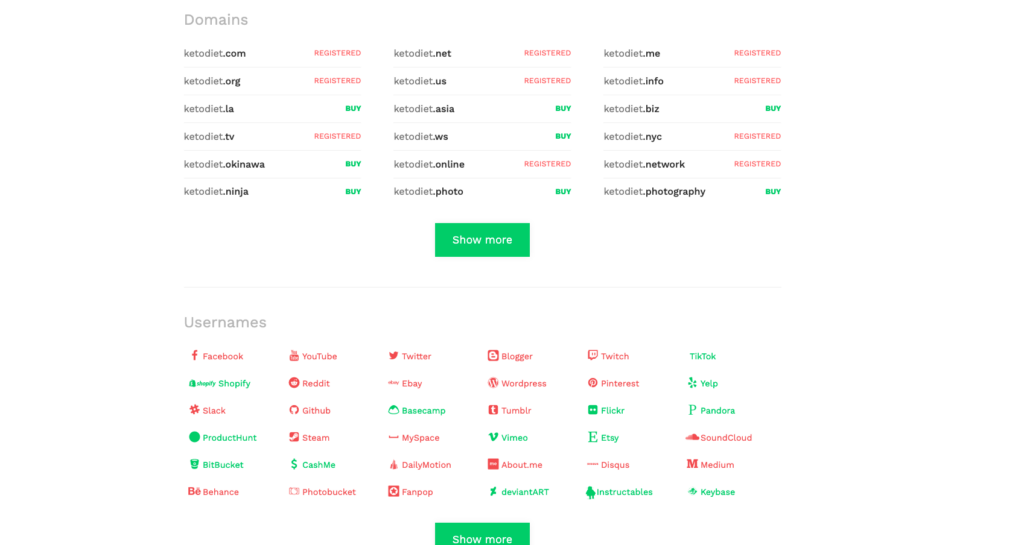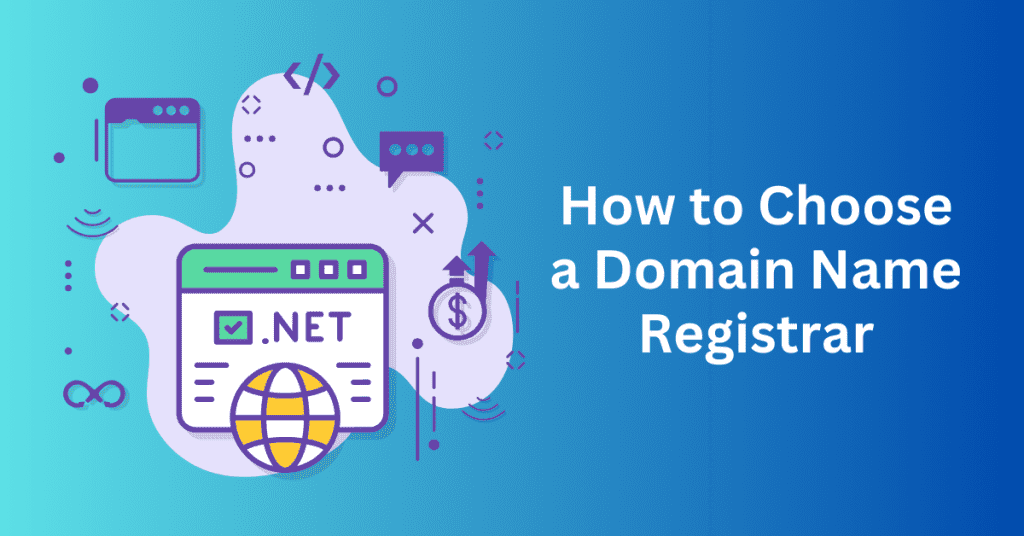Your domain name is the digital beacon that guides users to your online presence. Whether you’re launching a personal blog, a business website, or an e-commerce platform, choosing the right domain name is a critical first step.
A domain name is not just a web address. Instead, it’s your online identity. Join us on this journey as we delve into the art and science of selecting the perfect domain name that resonates with your brand, attracts the right audience, and stands the test of time.
What is A Domain Name?
A domain name acts as a user-friendly alias for the complex numerical addresses that computers use to locate and connect across the vast network of the internet. A domain name’s structure is hierarchical and composed of multiple levels, each separated by a dot. The rightmost part of a domain name is the top-level domain (TLD), such as .com, .org, .net, or country-code TLDs like .uk or .jp. The leftmost part is the specific name chosen by the domain owner, often referred to as the second-level domain (SLD). For example, in the domain name “example.com,” “example” is the SLD, and “.com” is the TLD.

Domain names play an important role in simplifying how individuals access websites and online resources. Instead of memorizing a string of numbers, users can easily remember and type in a domain name to reach their desired destination on the internet. Furthermore, domain names are a vital aspect of branding, as they contribute to the online identity of businesses, organizations, and individuals. Choosing an appropriate and memorable domain name is crucial for establishing a distinct online presence and enhancing visibility in the digital landscape.
Domain names are typically registered through accredited domain registrars, and individuals or entities acquire the right to use a particular domain name for a specified period. This is usually renewable on an annual basis. The registration process involves selecting an available domain name, providing contact information, and paying a registration fee. Once is registered, the domain owner gains control over the associated DNS records. It will allow them to configure settings like pointing the domain to a specific server or setting up email services.
Get a Free Domain with Bluehost Hosting
How to Register a Domain Name

Registering a domain name is a crucial step in establishing an online presence. Here’s a detailed guide on how to register a domain name:
Step 1: Choose a Domain Name:
Firstly, select a suitable domain name for your website. It should be relevant, easy to remember, and reflective of your brand or content. You need to keep it concise, avoiding complex or easily misspelled words.
Once you’ve chosen a domain name, use a domain registrar’s search tool to check its availability. You can use a tool like Namechk. Namechk will check across different platforms for name availability. This is so that you can have the same branding name across all different platforms.

Otherwise, most registrars, accredited entities managing domain names, offer these tools on their websites. If your chosen name is already taken, consider variations or choose a different top-level domain (TLD).
Step 2: Select a Domain Name Registrar:
To choose a reputable domain registrar, research and compare accredited providers, considering factors such as pricing transparency, positive customer reviews, and reliable customer support. Opt for registrars with a track record of security, user-friendly interfaces, and clear terms and conditions to ensure a trustworthy and seamless domain registration experience.
Choose a reputable domain registrar to complete the registration process. Popular registrars include GoDaddy, Namecheap, and Google Domains. Compare pricing, customer support, and additional services offered by different registrars.
Step 3: Create an Account:
Firstly, to register a domain, you’ll need to create an account with the chosen registrar. You need to provide accurate contact information, including name, address, email, and possibly a phone number. This information is associated with your domain registration.
Then, during registration, configure your domain settings. Choose the registration period (usually one year initially), select any additional services (e.g., domain privacy protection), and set up privacy settings.
Domain privacy protects your personal information from being publicly visible in the WHOIS database.
To complete registration, provide payment information for the registration fee. Prices vary depending on the registrar and chosen TLD. Hence, be aware of renewal fees and policies to ensure you maintain ownership of the domain. Some domain registrars offer low first-year fees and charge a huge sum during renewal.
Before finalizing registration, carefully review the selected domain name, registration period, and additional services. Confirm that all information is accurate and verify the total cost. Some registrars offer auto-renewal options to prevent accidental expiration.
Step 4: Complete the Registration:
Once you’ve confirmed the details and made payment, the registrar will process your registration. You’ll then receive a confirmation email with information about your domain registration, including login credentials for managing domain settings.
Step 5: Configure DNS Settings (Optional):
If you have a specific hosting provider, configure Domain Name System (DNS) settings to point your domain to the correct server. This step is often optional, depending on your hosting arrangement.
Step 6: Maintain and Renew:
Regularly check and update domain settings. Domain registrations are typically for a set period (e.g., one year), and you’ll need to renew your registration before it expires to retain ownership of the domain.
Get a Free Domain with Bluehost Hosting
How to Choose a Domain Name Registrar

Choosing the right domain registrar is a crucial step in the process of establishing an online presence.
Here is a detailed guide on how to select a domain registrar:
1. Research Accredited Domain Name Registrars:
Firstly, start by identifying accredited domain registrars. Accreditation ensures that the registrar adheres to industry standards and regulations.
It would be best if you looked for registrars accredited by the Internet Corporation for Assigned Names and Numbers (ICANN) or other relevant authorities.
2. Compare Pricing and Services:
Then, research and compare the pricing structures and services offered by different registrars. You need to pay attention to the initial registration fees, renewal costs, and any additional services provided, such as domain privacy protection, email hosting, or website builders. Consider the overall value for your specific needs.
Some registrars offer additional features or perks, such as domain forwarding, DNS management tools, or integration with website builders. Assess these additional features to determine if they align with your current and future needs.
In addition, you should evaluate the registrar’s domain privacy protection options. Domain privacy, often offered as an additional service, conceals your personal information from the public WHOIS database. This can help protect your privacy and reduce the risk of spam or unwanted solicitations.
3. Evaluate Customer Support:
Reliable customer service is essential, especially if you encounter technical issues or need assistance with domain management. You need to check for support options such as live chat, email, or phone support, and read reviews to gauge the registrar’s responsiveness.
4. Review User Interface and Ease of Use:
The registrar’s user interface should be intuitive and easy to navigate. A user-friendly control panel is essential for managing your domain settings, making it simple to update DNS records, configure email settings, and renew your domain registration. Look for a registrar with a well-designed and functional dashboard.
5. Check Domain Name Transfer Policies:
Understand the registrar’s domain transfer policies. In the future, you may decide to move your domain to another registrar, so it’s important to know the procedures, associated fees, and any waiting periods involved in domain transfers. Choose a registrar that allows for easy domain transfers if needed.
6. Read Reviews and Ratings:
Read reviews and ratings from other users to gauge the registrar’s reputation and reliability. Look for feedback on uptime, customer service, and any notable issues reported by customers. Online forums and review websites can provide valuable insights into the registrar’s track record.
By thoroughly researching and considering these factors, you can make an informed decision when selecting a domain registrar that best suits your requirements for domain registration and management..
Get a Free Domain with Bluehost Hosting
How to Choose Your Domain Name?

Choosing the right domain name is a crucial step in establishing a successful online presence. A domain name not only represents your brand but also plays a significant role in your website’s visibility and memorability. To make an informed decision, consider the following tips:
1. Relevance to Your Content or Business:
Firstly, you should select a domain name that reflects the essence of your content or business. It should give visitors an immediate idea of what your website is about. This will tell your visitors and potential customers what you are doing and what to expect to get from your website.
Besides, it will be easier for them to remember your domain name when they want to visit it again next time. In addition, a relevant domain name enhances search engine optimization (SEO) and helps attract the right audience.
2. Keep it Short and Simple:
Short and concise domain names are easier to remember and type. You need to avoid complex spellings, hyphens, or unnecessary words that might confuse users. Some businesses like to use special spelling words or complicated words. This is good when you have strong branding and people can remember your brand.
Besides, numbers and hyphens can lead to confusion and are often misunderstood when spoken. They can also be easily mistyped, leading visitors to a different website. Choose a name that can be easily communicated verbally and is less prone to user errors.
In addition, if it’s a misspelled word, it will be hard for your potential customers to remember your domain name. And when they input it in their browser, they might not be able to reach your website due to wrong spelling.
Hence, you should aim for a name that is easy to pronounce and can be easily recalled by your target audience.
3. Choose a Memorable Name:
A memorable name increases the chances of repeat visitors. When you opt for a name that stands out and is distinctive, it’s easier for your visitors to remember you.
Hence, you need to consider how easy it is for someone to recall your domain name after seeing it once, and try to make it memorable and unique.
However, before finalizing a domain name, you must ensure that it doesn’t infringe on existing trademarks. You can check for trademarks in your industry or geographical location to avoid potential legal issues down the road.
This step is crucial for building a brand without facing legal challenges. It will cost you both time and money to handle the trademark infringement case.
4. Consider Keywords:
Organic traffic is one of the methods for your business’s long-term growth. Incorporating relevant keywords in your domain name can boost your website’s SEO.
Think about the words or phrases users might use when searching for your content or business. You should incorporate that keyword in your domain name. However, prioritize the natural flow of the name over forcing keywords, as user experience is paramount.
5. Think Long-Term:
When you choose a domain name, you need to make sure that it is scalable and can grow with your business. Hence, avoid limiting yourself to current trends or specific products/services.
It’s a huge effort to educate your customers when you want to change your domain name. And in most cases, it takes huge effort and marketing costs to inform your customers about the change.
Hence, you must consider the long-term goals of your website and how the domain name will align with potential future expansions.
6. Check Domain Availability:
Before falling in love with a particular name, ensure it is available for registration. You can use domain registration services to check for availability and variations.
It’s wise to register your domain with reputable providers to ensure a smooth registration process and reliable ongoing service.
Besides, it will be good if you can use the same name across all different platforms. You can use namechk to check the name availability for multiple TLDs and social media platforms. This is very important for your branding.
7. Choose the Right Domain Extension:
While the traditional .com extension is widely recognized and often preferred, consider other extensions like .net, .org, or industry-specific extensions if the .com version is unavailable. Ensure the chosen extension aligns with the nature and purpose of your website.
If you are working on a local business, a country-based TLD is important for you. It will help to rank better in that country’s search results.
8. Claim Different Related Domain Name
Ensure that your domain name is consistent across all platforms to effectively represent your brand. It would be disappointing to discover a perfect name only to find it unavailable as a Twitter handle. To maintain a cohesive brand image, check the availability of your chosen name on all the platforms you intend to use.
Besides, consider exploring alternative options for your desired name, including potential misspellings. If possible, acquire those domains as well. This proactive step reduces the likelihood of another company adopting a similar name, preventing confusion for visitors.
You can utilize the additional domain names to redirect users to your website. This strategy ensures that visitors always reach your site, even if they happen to misspell your domain name.
Get a Free Domain with Bluehost Hosting
Final Thoughts: How to Choose and Register a Domain Name
As we wrap up our exploration of the process of choosing a domain name, we hope you now feel equipped to navigate the digital landscape with confidence.
Your domain name is more than just a combination of letters and symbols; it’s the gateway to your online world. As there are over a billion websites out there, your chosen domain name might be taken. Hence, you need to research carefully and check from different registrars to get the best deal when getting your domain name. Not to forget, some web hosting companies do provide free domain names for 1 year with hosting subscriptions.
By opting for relevance, simplicity, and memorability, you’re not just selecting a web address – you’re crafting an online identity. So go ahead, choose wisely, and let your domain name be the cornerstone of your digital success. Here’s to creating a web presence that leaves a lasting impression!





